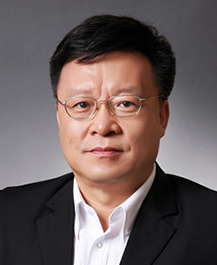
Professor Gao Wen received the B.S. degree in computer science from Harbin University of Science and Technology in 1982, the M.S. degree in computer science from Harbin Institute of Technology in 1985, the Ph.D. degree in computer science from Harbin Institute of Technology in 1988, and the Ph.D. degree in electronics engineering from the University of Tokyo in 1991, Tokyo, Japan. He is working in the areas of multimedia and computer vision, including video coding, video analysis, multimedia retrieval, face recognition, and multimodal interface.
Prof. Gao now is a Boya Chair Professor and the Director of Faculty of Information and Engineering Sciences at Peking University. He also serves as the vice president of National Natural Science Foundation China (NSFC) from Feb. of 2013, and the president of CCF from Feb. 2016.
Prof. Gao works in the areas of multimedia and computer vision, topics including video coding, video analysis, multimedia retrieval, face recognition, multimodal interfaces, and virtual reality. His most cited contributions are model-based video coding and face recognition. He published seven books, over 220 papers in refereed journals, and over 600 papers in selected international conferences. His publications have been cited for over 28,000 times, and his H-index is 75, according to Google Scholar.
Prof. Gao served or serves on the editorial board for several journals, such as IEEE Transactions on Circuits and Systems for Video Technology and IEEE Transactions on Multimedia. He chaired a number of prestigious international conferences, such as IEEE ICME 2007, ACM Multimedia 2009, IEEE ISCAS 2013. He earned many awards such as one second class award in technology invention by the State Council, and six second class awards in science and technology achievement by State Council. He is a fellow of IEEE, a fellow of ACM, and a member of Chinese Academy of Engineering.
His research achievements are summarized as follows:
1) Surveillance Video Smart Coding and Analysis: As the surveillance video data increase explosively, high efficiency surveillance video coding and analysis becomes challenging. He and his team proposed a background picture model based surveillance video coding method. The proposed background picture prediction can further improve the coding efficiency up to 50% bits saving. The coded background picture also makes the object detection and tracking task easy. Moreover, he proposed to encode the object features into the video streams, which is much helpful for real time video analysis.
2) Compact Descriptor Visual Search: Visual search becomes more and more popular with the widely applications of smart phones. MPEG started a Compact Descriptors for Visual Search (CDVS) standardization project from 2010, which targets to enable efficient and interoperable design of visual search applications. He and his team have contributed a lot of visual search core techniques in CDVS standard, including local feature descriptor aggregation, low complexity interest point detection, local feature descriptor compression, high efficient indexing in a Hamming space of binary descriptors, etc. Over 10 patents on MPEG CDVS standard core techniques have been filed.
3) Audio and Video Coding Standard: In 2002, he founded the Audio and Video Coding Standard (AVS) Working Group in China. Under his leadership, AVS working group has established series of audio and video coding standards. So far, the first generation AVS1 video coding standard targeting HDTV broadcasting has been widely used in China. The second-generation video coding standard AVS2 has been approved as a national standard in 2016, which can achieve two times coding efficiency improvement compared to AVS1. In the near future, AVS2 will used for 4K super high definition video broadcasting.